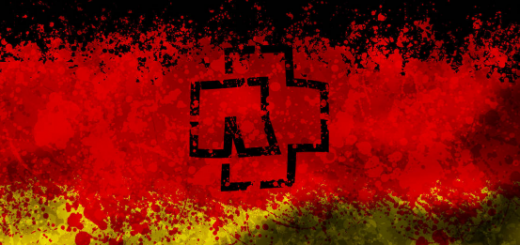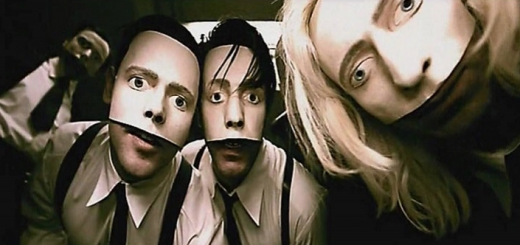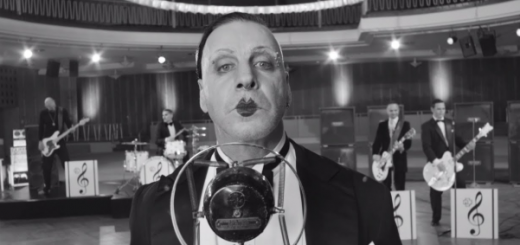Das alte Lied by Rammstein Lyrics Meaning – Unraveling the Depths of Existential Anguish
Lyrics
Aus der Bohne und in das Licht
Ein Wesen mich zu gehen drängt
Für die selbe Sache und das alte Leid
Meine Tränen mit Gelächter fängt
Und auf der Matte fault ein junger Leib
Wo das Schicksal seine Puppen lenkt
Für die selbe Sache und das alte Leid
Weiß ich endlich hier wird nichts verschenkt
Aus der Bohne und in das Nichts
Weiß jeder was am Ende bleibt
Die selbe Sache und das alte Leid
Mich so langsam in den Wahnsinn treibt
Und auf der Matte tobt derselbe Krieg
Mir immer noch das Herz versengt
Die selbe Sache und das alte Leid
Weiß nur endlich …
Ich will ficken
Nie Mehr… Nie Mehr
Das Alte Leid
Nie Mehr… Nie Mehr
Das Alte Leid
Aus der Bohne und in das Licht
Ein Wesen mich zu gehen drängt
Für die selbe Sache und das alte Leid
Meine Tränen mit Gelächter fängt
Und auf der Matte fault ein junger Leib
Wo das Schicksal seine Puppen lenkt
Für die selbe Sache und das alte Leid
Weiß ich endlich…
Nie Mehr… Nie Mehr
Das Alte Leid
(x6)
Like the ominous rumble of thunder before a storm, Rammstein’s ‘Das alte Lied’ heralds a tempest of critical self-reflection and raw emotional purging. The German industrial metal titans have long used their powerful aesthetics and commanding lyrics to tackle complex themes. ‘Das alte Lied’ is a labyrinthine track that demands to be deciphered, echoing with the weight of existence and the cyclic struggle inherent to the human condition.
Masterfully entwining metaphors with stark realism, ‘Das alte Lied’ is as haunting as it is profound, traversing through the corridors of the psyche to confront the paradoxes of life’s continuity and stagnation. Here, we delve into the chilling yet rich scenery Rammstein erects, verse by verse, to reveal the semblance of their poignant message engraved within.
The Struggle from Obscurity to Enlightenment
The opening lines, ‘Aus der Bohne und in das Licht’ (From the seed and into the light), set the stage for transformation. It’s the eternal movement from obscurity, symbolized by the seed buried in the dark soil, into a realm of understanding and realization—the light. Rammstein probes this natural but painful human journey, suggesting an inevitable push, a ‘Wesen’ driving us to engage with life’s constants and suffering—the ‘alte Leid’.
The leaden realization that with enlightenment comes the awareness of the unchanging nature of struggle, ‘Meine Tränen mit Gelächter fängt’ (My tears catch with laughter), hints at a sardonic acceptance of this dichotomy. The laughter isn’t one of joy but of recognizing the inevitability of the cycle; as much as we evolve into the light, we cannot escape the undercurrent of ‘das alte Leid’.
Decay and Manipulation: A Mirror to Society
Further in the verse, ‘Und auf der Matte fault ein junger Leib’ (And on the mat, a young body rots) evokes a stark image of neglect and decay. This could serve as an allegory for how society allows its youth, its hope for the future, to wither away under the opressive dynamics of systematic control, as suggested by ‘Wo das Schicksal seine Puppen lenkt’ (Where fate steers its puppets).
Here, Rammstein possibly criticizes the manipulative strings that bind individuals to their destinies—an indictment of a patriarchal world that plays god with human lives. The repeated confrontation with ‘the same issue and the old suffering’ illustrates this Sisyphean battle where each generation inherits the struggles of the last, never truly moving forward.
The Haunting Refrain: Rejecting Eternal Agony
The searing simplicity of ‘Ich will ficken’ (I want to fuck) is a jarring interjection in the narrative. It wrenches away from the philosophical and plunges into the primal—a raw expression of a desire to feel, to connect, to escape even momentarily from the cyclical torment.
The following lines, ‘Nie Mehr… Nie Mehr Das Alte Leid’ (No more… no more the old suffering), embody a desperate plea and a staunch refusal to succumb indefinitely to the familiar pain. Herein lies perhaps a call to arms, to break away from the relentless sorrow that tradition and history have enshrined.
A Crescendo of Visceral Declamation
Rammstein’s versatility in bridging the sensual with the philosophical borders on a revolutionary chant. As the stanzas progress, they build upon the preceding narrative of resistance and realization, fueling an uprising against the ‘selbe Sache und das alte Leid’ (the same issue and the old suffering) that haunts us all.
‘Das Alte Leid,’ repeated six times at the end, imitates a mantra—chanted to exorcise the specters of bygone pains. It is both a resignation and a defiance, expressing the weariness of repeated battles and the relentless spirit of the human condition refusing to be quelled.
Unveiling ‘Das alte Lied’s’ Hidden Meaning
Beyond the veil of Rammstein’s visceral soundscape lies ‘Das alte Lied’s’ heart—an exploration into the nihilistic and the existential. The ‘selbe Sache’ represents the inescapable truths and recurring themes of human life: pain, joy, creation, and destruction.
Yet, in its dense poetry, ‘Das alte Lied’ is also a testament to renewal and resilience. Acknowledging the ‘old suffering’ is not an admission of defeat, rather, it is a necessary step towards transcendence—recognizing the inherent cycles of life to find the strength to rise above them. Rammstein, through this intense anthem, beckons listeners to question, to rebel, and ultimately, to find solace within the turmoil.








